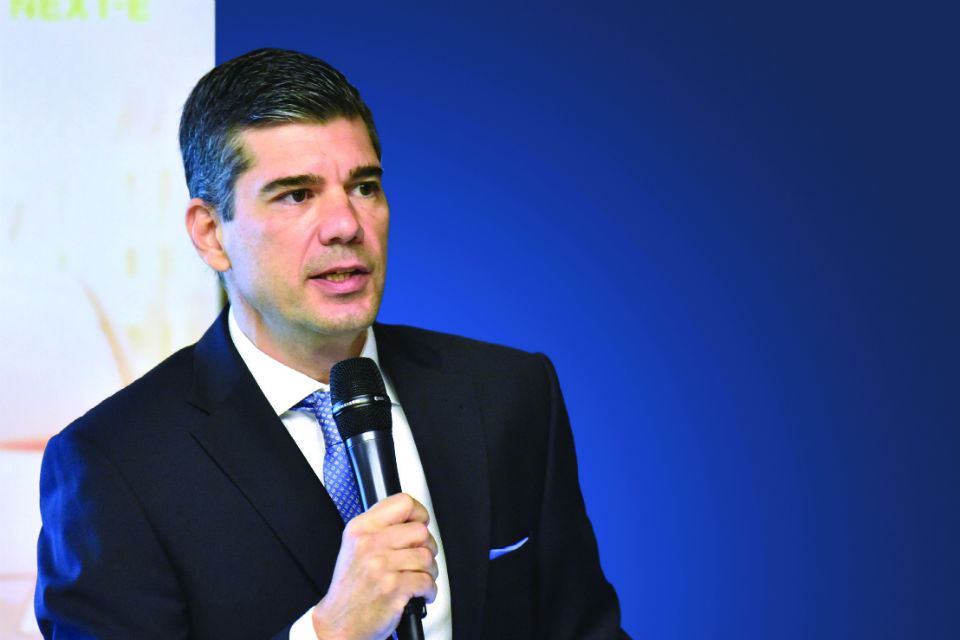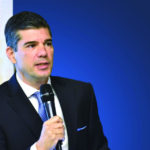INTERVIEW Panagiotis Pantazis, Oracle: Customers are more empowered than ever before and have sky-high expectations

A recent Oracle study looked at consumers across four generations and found that 43% of people blacklist brands that fail to meet their expectations. 41% of all consumers, and almost half of Millennials (47%), are willing to pay as much as 20% more for an impressive customer experience. 42% of people are more likely to buy from a company that offers novel ways to experience its products and services. Consumers from different age groups have very different attitudes toward sharing personal information. 64% of Gen Z and Millennial consumers are comfortable sharing personal information to receive better experiences compared to 50% of Gen X and 35% of Baby Boomers. The Diplomat-Bucharest talked to Panagiotis Pantazis, Oracle Applications Sales Leader, Greece, Romania, Cyprus, and Malta to find out more about consumer behaviour changes in the digital age.
How can a brand improve the customer experience with IoT?
The technology is rapidly expanding and so are the number of devices. IDC estimates that there will be 41.6 billion connected IoT devices, or “things,” generating 79.4 zettabytes of data in 2025. Many brands and marketers are reconsidering their strategies because of it. By utilizing information coming from IoT devices it is possible to not just improve sales but enhance customer experience.
High-end audio equipment brand Denon & Marantz is a fantastic example of a company that has used the connective power of cloud to provide the best customer experience. Through the Internet of Things, Denon collected data on how their products were being used and discovered something interesting. When given the option to name their Denon wireless speaker, many customers called it “bathroom speaker”. With this insight in hand, teams across the business collaborated to give customers more of what they wanted. Engineers prioritised bathroom-proofing the speakers ahead of other product updates, and marketing teams spun customer outreach campaigns based around the humidity-resistance of the speakers. Working together and sharing data, Denon was able to provide a proactive service to customers and greatly enhance their experience with the product.
The example illustrates that the conventional product roadmap is taking a back seat to ongoing product innovation, made possible by the real-world usage data that IoT devices can provide. When you’re presented with hard evidence of exactly how—and where—your customers want to use your product, your priorities become obvious.
What do different generations have in common when it comes to a positive customer experience? With a world of options at their fingertips and growing funds in their wallets, customers will look elsewhere if a business cannot swiftly understand and cater to their needs. A recent Oracle study looked at consumers across four generations and found that 43% of people blacklist brands that fail to meet their expectations. On the other hand, 41% of all consumers, and almost half of Millennials, are willing to pay as much as 20% more for an impressive customer experience. 42% of people are more likely to buy from a company that offers novel ways to experience its products and services. This is especially true for Gen Z (58%) and Millennials (56%). Consumers from different age groups have very different attitudes toward sharing personal information. 64% of Gen Z and Millennial consumers are comfortable sharing personal information to receive better experiences compared to 50% of Gen X and 35% of Baby Boomers.
How many brands (percentage-wise) are aware of the impact of a negative customer experience?
As we meet with our customers in Romania and Central Eastern Europe, we ask them what are the key things that they are most concerned about. We see that both in B2B or B2C business, their main challenge is keeping their clients happy and loyal. Therefore, customer experience is a topic which cannot be more timely, given today’s realities and concerns. It takes a long time and costs a lot to attract/find a customer, but in this day and age, it only takes one not so great interaction to lose a customer for life. Thanks to on-demand information and services available anytime, anywhere, customers are more empowered than ever before and have sky-high expectations. If a customer is bored or impatient, confused or frustrated, for even just a second, there are a myriad of other choices they can turn to. Gartner predicts that by 2020, poor customer experiences will destroy nearly a third of digital business projects, and PwC reports that 73% of customers now point to experience as an important factor of their purchasing decision. In this context, providing a personalised, seamless, predictive customer experience is a core pillar of business success and the only way to achieve that, is by connecting every part of the enterprise and making sure customers are at the centre of all decision-making.
How can a brand adapt its business model to the evolving customer behavior?
The average consumer generates a huge amount of data every day, across a vast range of channels; and in fact, an estimated 90% of the data that now exists was created in the past two years. On social, mobile, desktop and connected TV, consumers are creating masses of data based on their interests, purchases, location and brand sentiment. But when all that data remained isolated in business silos, the view of the customer becomes fragmented. Customer-centricity is not about what customers can see. It is a way an entire organization works that starts from the inside out. When the existing business environment is integrated and interoperable, without the perils of siloed technology and thinking, continual innovation is finally possible. Bold organizations are setting an example of improving the customer experience not only at the front-end, but also driving new innovation at the back-office, to go above and beyond their customers’ expectations. They are doing this mainly with investments in Cloud technologies so that they can use data in a more robust and connected way.
How many brands (percentage-wise) have implemented a strategy for improving customer experience?
I believe that the customer was always, or should have been, the center of attention for every vendor, for every organization, but there was never a golden rule for this. For example we have witnessed a strong focus from mobile operators on customer satisfaction since the mid-90s, but we haven’t seen much focus on other industries, especially in governement organizations and what we call “citizen satisfaction“. The sad truth is that customers experience not so great interactions with brands occasionally and I am sure everyone can tell a terrible story about the way you were treated by a vendor in the past. My opinion is that leaders are aware of the problem, they know the breakdown points that would allow a bad experience to happen, but the majority of them have not really planned or executed smart and thorough CX strategies, so I think we are only at the very beginning of the Experience Economy.
What business sectors are most likely to invest resources in customer experience?
At first glance one would think that retail or services companies should stand out in implementing smart customer experience measures. But in fact a much wider range of organisations understood already the need for better CX. For example, according to a McKinsey report, even public sector organisations are also now starting to ger serious about citizen experience. Therefore, as long as you have customers, you need to be great at delivering amazing experiences. But, it has to be clear that different industries are driven by different measures of customer satisfaction. In the energy sector, for instance, price is the biggest measure of negativity, while service is the major source of positive comments. In the automotive sector, meanwhile, product quality is the biggest factor affecting both positive and negative customer sentiments.















